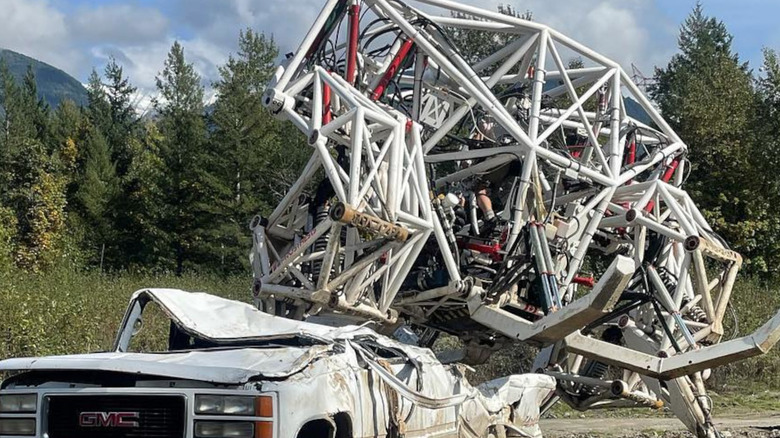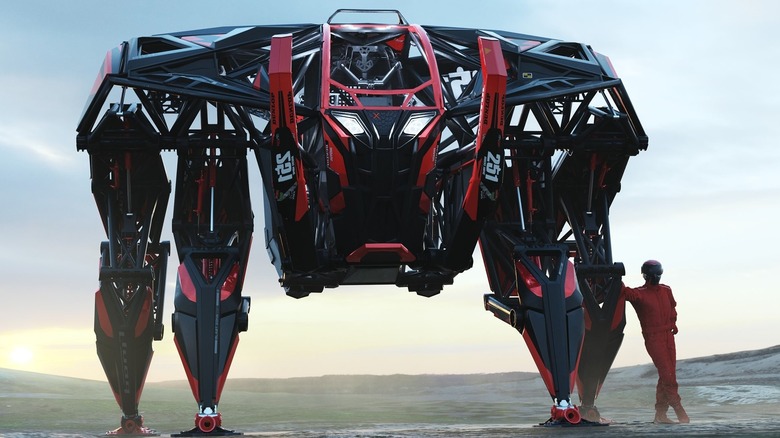This Real Mech Suit Is Wildly Powerful
The mech suit — a powered exoskeleton with a human pilot — has been a sci-fi mainstay ever since being used in the climactic battle in 1986's "Aliens" (and spectacularly spoofed on "Community"), going on to appear prominently in other popular films including the second and third installments of the "Matrix" series, "Avatar," and "District 9." But now it's official: mech suits have made the jump from science fiction to just plain science.
A mech suit has officially been built by the Canadian company Exosapien Technologies. Its flagship prototype, called "Prosthesis," holds the Guinness World Record for the largest tetrapod exoskeleton, and this thing is a beast. It's nearly 13 feet tall, more than 16 feet long, over 18 feet wide, and weighs an astounding 9,000 lbs. The structure is primarily made from chromoly steel tubing. Massive bumper bars in front of the pilot curve upward like the tusks of a metallic mammoth. It's truly unlike anything we've seen before.
Prosthesis is powered by a lithium-ion battery, and its hydraulic system makes its a human pilot 50 times stronger. It appears well-adapted to any terrain, from jungle paths to shallow waterways to desert brushlands. So what to the creators of this mech suit think it might be used for? If you thought military applications, you'd be wrong ... surprisingly. Prosthesis' future appears to be more "Real Steel" than "Edge of Tomorrow."
Mech sports
In an interview with WTFuture, Exosapien's founder Jonathan Tippett said he sees these mech suits being used for mech sports and entertainment, which he describes as "American Ninja Warrior meets monster trucks." The suits are not automated, instead relying 100% on their human pilots for movement and dexterity. These machines definitely appear to take skill and practice to effectively handle.
Afterall, humans are typically two-legged creatures, and these mech suits have four. The design of the suits is open, but it might be difficult to maintain a sense of the surroundings in such an outsized body. And while the pilot has some level of cushioning in the form of shock absorbers, the three-dimensional lurching could feel a little like a rollercoaster ride.
Until the first mech sport arenas are built (which aren't exactly in the works), Exosapien offers private lessons and suit-time packages on its website. The intro training is 90 minutes long and covers standing and balancing. It takes a 3-day commitment before learning to walk, and would-be pilots have to become a class 1 mech pilot (for an eye-watering $19,900) before they're flipping and crushing cars.
These suits aren't exactly mainstream, but this is a lot more than just a concept. Exosapien has built a fully-functional human-piloted mech suit, and it looks like a blast to pilot one of these things. We can only hope we eventually get to see a Prosthesis match up against a Kurata one day.

